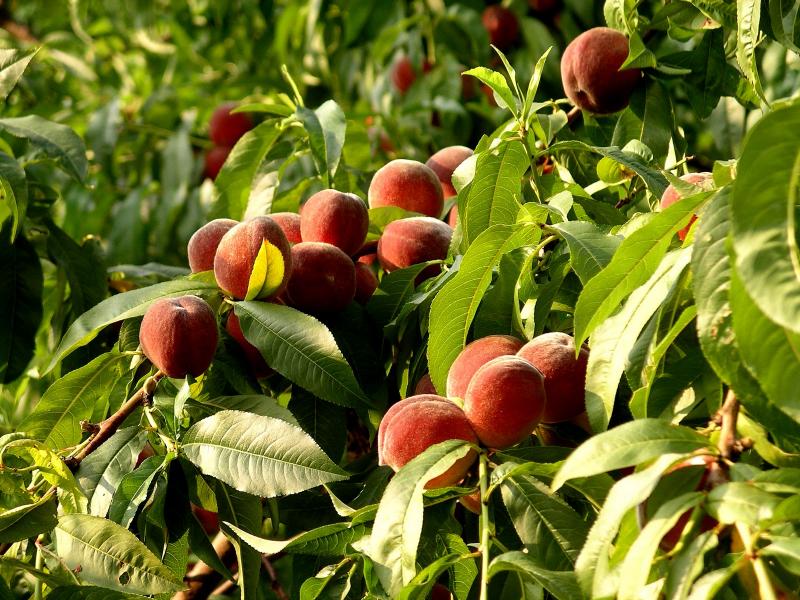As engines and machinery got bigger, mechanics would dig a pit under the machinery to let the workers examine and repair it. By 1839, the pit was part of our language. When automobile racing became popular, drivers’ visits to the trackside repair and service station became known as pit stops, although there was often no pit.
Sometimes our lives and gardens need a pit stop. Otherwise, as in the American slang from the 1950s, life would be the pits.
But what if you could turn the pits of plums, cherries and especially peaches, into something great, like free fruit trees. After the Spanish introduced the peach to America, Native Americans quickly made use of the peach's ability to grow true from seed and planted thousands of peach trees. Many Europeans assumed the peach tree (Prunus persica) was native to the Americas, instead of Persia.
Peaches, nectarines and apricots all breed true from seed. Grafted trees bear fruit identical to their parent, while seed-grown fruit can and will vary slightly from the parent fruit.
To plant a peach pit, first remove all of the flesh from the peach, leaving the rough inner pit. Let the pits dry overnight in a dark place, out of any drafts.
You can either plant the entire pit or remove the inner pit from the hard outer shell that resembles a walnut. This outer shell protects the almond-shaped seed. Sometimes your pits will crack or split on their own, and you can gently pry them apart; the pit will be split, and you can separate it without damaging the seed. If the pit isn't separated or you think you'll damage the seed trying to remove it, just leave it as is and plant the whole pit.
Handle peach, nectarine and apricot seeds carefully, because they contain the poison cyanide. Wear gloves, and wash your hands after handling the seeds.
Wrap each peach pit in a damp paper towel, and place it into an individual plastic bag, one pit per bag. Place the bagged pits in a refrigerator, not a freezer, for eight weeks.
Remove the pits from the cold and let them sprout in the bag. Once sprouted, pot the seedlings or plant them directly into the ground.
Potted trees have to get used to the outdoors in a process called hardening off. Set the trees outside every day where they will get indirect sunlight, but be sheltered from wind. Gradually increase the time from two or three hours outside to eight hours outside.
Plant your peach trees in full sun in light soil that drains well. Ideal soil pH is between 6.0 and 7.0. Stake the trees so they do not snap in strong winds. Protect them from foraging pests such as deer and rabbits with a three-foot-tall hardware cloth cylinder slipped over each seedling. Peaches and nectarines are self-pollinating, so a single tree will produce fruit. All tart cherries and some sweet cherries such as Lapins and Stella are self-pollinating, but many are not, and you need another variety nearby for cross-pollination.
Your seed-grown peach, cherry or apricot trees will usually bear fruit three to five years after planting.
While they will probably be perfectly fine, and resemble the original store-bought fruit, your tree could also yield something entirely different.
So, if you feel that life is a bowl of cherries, but you got the pits, take heart and plant the pits of cherries, apricots, nectarines and peaches. During a pandemic, gardening may be the pit stop you need.
























































